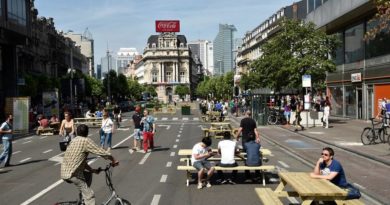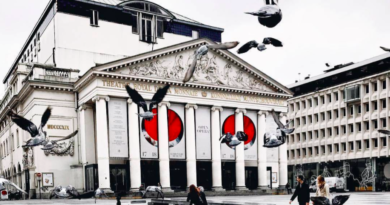The Future Library: Why Norway is planting trees of hope for the world’s future generations
On Monday April 15th, hundreds of people looked up at the sky in Paris and gazed at the impossible: Notre Dame Church was on fire. Clouds of smoke rose over the building like a ghost, flames devouring the centuries-old wooden roof beams. Ash descended on the shoulders of those who stood on the sidewalks in shock, hands covering their mouths, tourists and residents alike.
After a 9-hour long fight, the inferno was finally suffocated by a team of 400 firefighters. In the street, Parisians sang hymns as they watched their beloved church smolder. On the internet, videos of the tragedy went viral. Not only France, but the entire world felt wounded. The loss was immense.
In the hours that followed, hundreds of millions of Euros were pledged to repair the damages. Governments extended a hand of solidarity to the people of France, because for everyone one thing was clear: the 850-year old building must continue to stand, resurrected, as an emblem of the beautiful city of Paris for future generations.
Notre Dame’s Cathedral was built over the span of not one or two, but several generations — it took 182 years to finish medieval church. The people who first embarked on its construction in the year 1160 knew that they wouldn’t live long enough to see the completion of the work, yet they gave their soul to the task while they could. Why?
To dive into this and other questions related to hope, the future of human kind, trees, literature and our connection to nature, I am in Oslo to meet Anne Beate Hovind, Project Director for Art at Bjørvika Development and Chairwoman of the Future Library Trust.
åpent bakeri is a coffee shop in the Bjørvika neighborhood in downtown Oslo. Several new and highly stylized buildings have been erected in this part of the city, one next to the other — people call it the Barcode district. On the floors above the cafe, offices from different companies overlook the Oslo fjord, its calm waters mirroring an expansive canvas of Nordic sky.
It’s half past noon and warm beams of April sunlight enter the room at an angle streaking the wooden floors with golden lines around me. I’ve been longing to speak with Anne Beate for a few days, ever since I found out about The Future Library, a project designed and executed by Anne Beate, along with Katie Paterson, a Scottish artist behind the art work. For the project, a thousand trees have been planted in Nordmarka, the forest on the northern outskirts of Oslo. In a 100 years’ time, the very same trees will become the paper for a collection of books, none of which can be read before 2114.
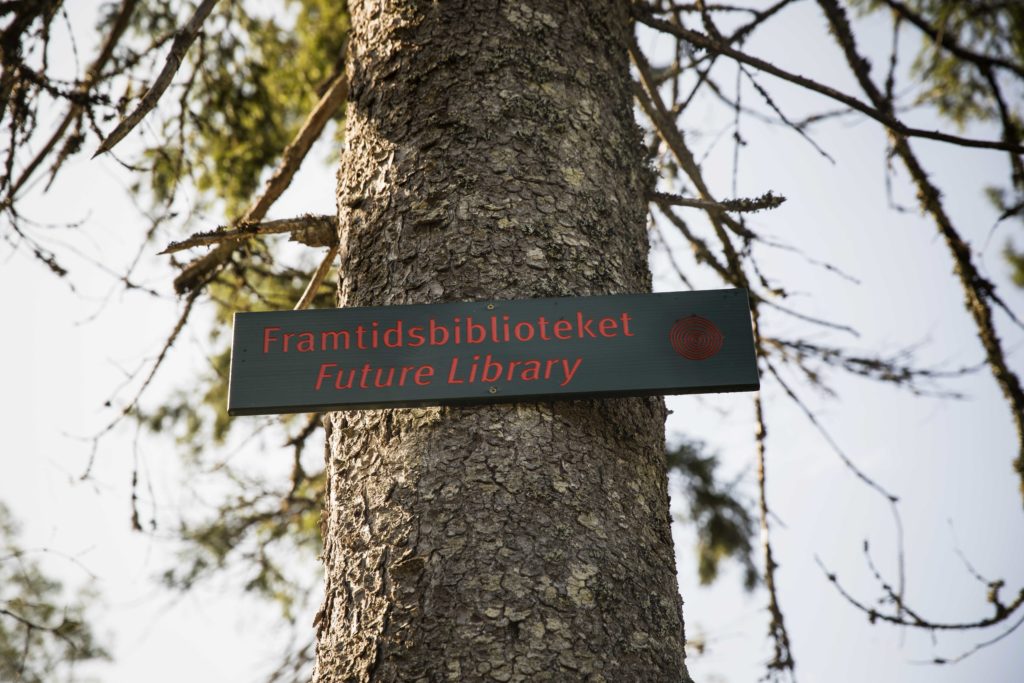
“Katie had spent a few days in my cabin, in Elverun, trying to think of ideas for a new project and one day she called and said, ‘I know what I am going to propose. It’s something that’s going to last for a hundred years.’ The first thing I thought was, How am I going to convince the board about this? How are we going to convince the municipality of Oslo?”
Among many other activities, Anne Beate works as an adviser and project director for art at Bjørvika Development, the company that has been in charge of construction, creating open public spaces and bringing life to the area.
“My first reaction was, It’s too risky. If the board asks me to run a risk assessment this is never going to fly. But a little later we realized that if you want to achieve something extraordinary, the kind of thinking that you need to have is the opposite. Instead of narrowing down, you have to open up and see what’s out there that hasn’t been tried yet.”
Anne Beate has green eyes and olive skin, delicate manners, the smile of someone whose passionate about life. “When Katie told me about the project, it confronted me with my own mortality,” she says. “When you think of the span of such a project, it’s too far into the future. But that’s where the ideas of hope and trust come into play. I have to trust that future generations will continue this project, and they also have to trust me, trust that I will take action now so that they can actually have a future.”
The idea of cathedral thinking comes from medieval times when architects and artisans embarked on building a cathedral knowing they would never see the end product. It is a shift of focus from the individual towards the collective good, as well as to the greater good of the future. “Not long ago Stephen Hawking referred to Cathedral Thinking when he said that the most meaningful thing life is not inheriting money, property, but rather inheriting a great challenge. A challenge that one generation starts and another continues and so on until the next one sees it fulfilled.”
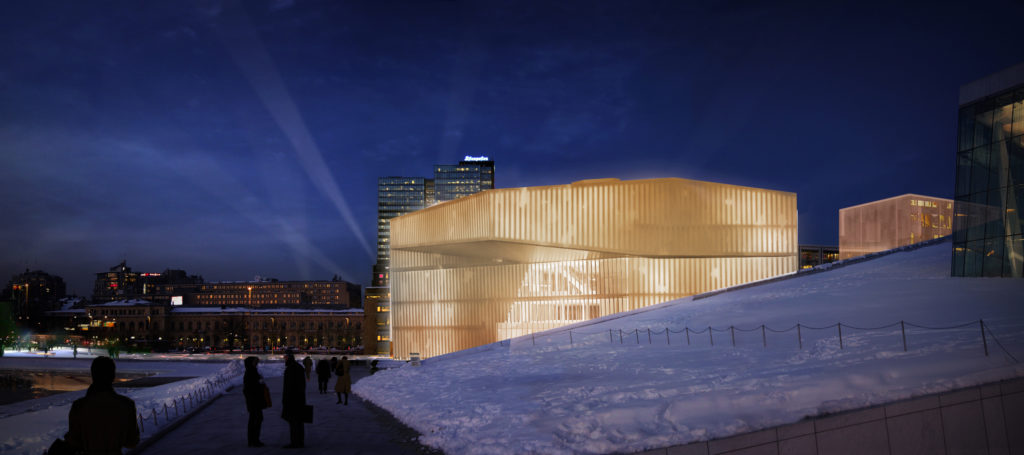
From the time Anne Beate and Katie decided to set off on this adventure until it became a reality, they encountered many fortunate surprises. But also great challenges. “When Katie suggested that we have a chat with the Oslo Municipality and the Deichmanske Library to see if The Future Library could have a room of its own I thought, How are we going to convince them about something that needs 100 years to be completed?”
The new building for the Deichmanske Library, also in Bjorvika, is scheduled to open in 2020, as well as the new Edvard Munch Museum just a few meters into the Fjord, in what is a fantastic display of modern architecture and Nordic design.
One of the rooms in the new library was originally conceived to become a Silent Room, and that’s where The Future Library has found a home. “When Katie explained the idea to Liv Sæteren, Deichmaske Library’s director at the time, Liv started to cry. It was clear that she and Katie shared views on the idea of delayed publication, keeping the manuscripts, and so The Future Library will have a home right here in Bjørvika, in that building over there.”
The authors that have so far contributed manuscripts to The Future Library include: Margaret Atwood, David Mitchell, Sjón, Elif Shafak, and Han Kang.
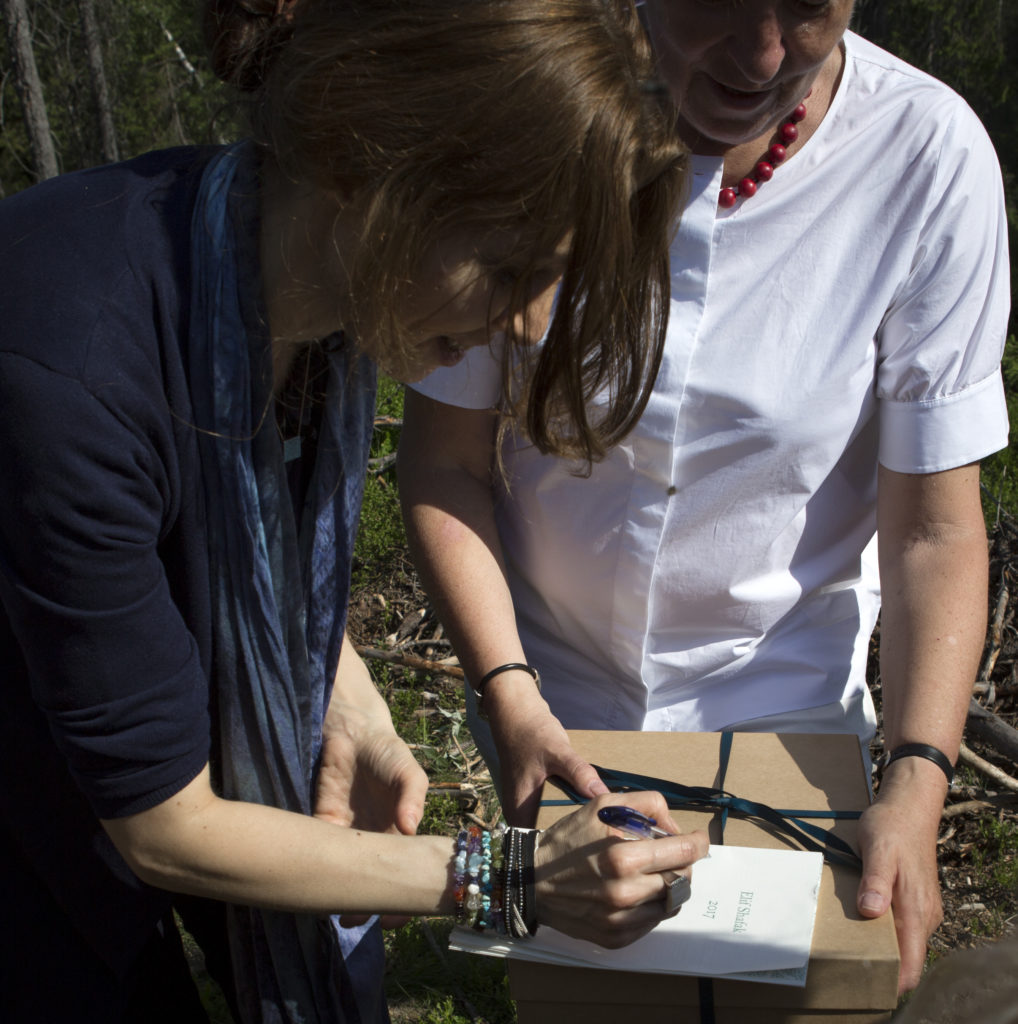
“I still remember the day when Katie called to say Margaret Atwood had accepted to participate in the project. We realized that was of course huge and we were both in awe. And even to this day, we are astonished by how much The Future Library is touching so many people across the world. People are moved by it. Nobody could imagine how much it would resonate.”
When asked about whether this project could have happened anywhere else in the world, the forests of Canada or Finland, Anne Beate tilts her head and gazes at me. For a moment she seems to be considering the question, then says, “People say it couldn’t happen anywhere else, that it had to be in Norway.”
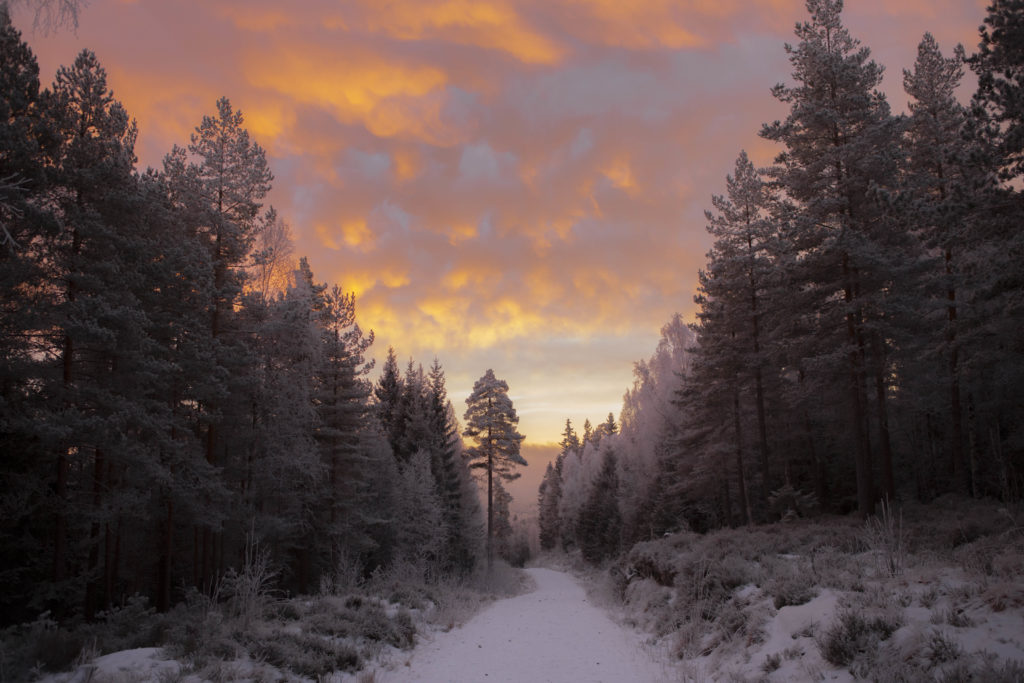
The idea of breaking up the soil and planting a thousand trees, tending to them and pruning the branches over time, all of it implies a desire to stay closer to nature, a trait that lies at the heart of Norwegian culture. “Yes, there is that, but there is something larger, the idea of hope. By doing this we believe that there will be people in the future, that there will be a forest. We need strong narratives that, in an ever-changing world, show us how to reconnect with nature.”
The smell of smoked ham, melted cheese and brewed coffee wafts in the air. People around us chatter in low voices; they are at the end of their lunch breaks. Anne Beate opens her computer and shows me pictures of the ceremonies that have taken place every year when an author hands over his/her manuscript to the city of Oslo. A walk starts in the middle of the city and ends up in the forest, where the young trees have been planted. This year, on May 25th, South Korean writer Han Kang will be in Oslo to deliver her work to the city, her gift to The Future Library.
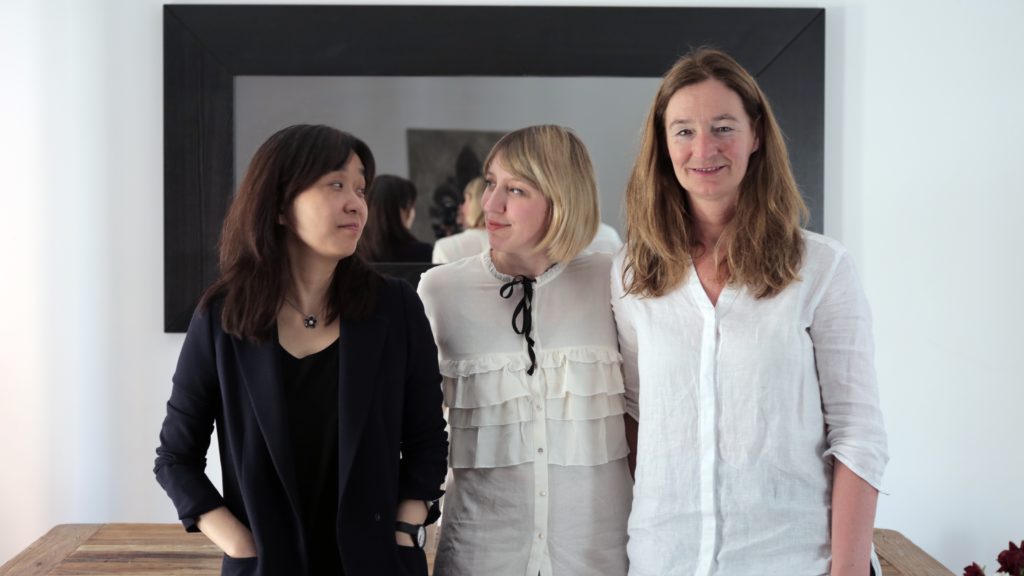
I thank Anne Beate for her time and for her insights; so many thoughts to take in. As I leave the cafe and walk into the cool sunny afternoon, I cannot but think back to the idea that letting go of an outcome can mean both, living fully in the present and caring about the future. In the middle of a bridge I stop and bring a hand to my brow to shield my eyes from the glare. I watch a train ride by, a slow procession of wagons one after the other, until the clattering dissolves into distance. I continue walking, somewhat dazed, not knowing which path I will follow. And the words of Han Kang still linger in my head:
“If it is possible to call prayer the moment when, in spite of all the uncertainty, we have to take just one step towards the light, in this moment I feel that perhaps this project is something close to a century-long prayer.”
***
My encounter with Anne Beate Hovind wouldn’t have been possible without the help of Mathilde Rübberdt, Communications Advisor for VisitOSLO.


